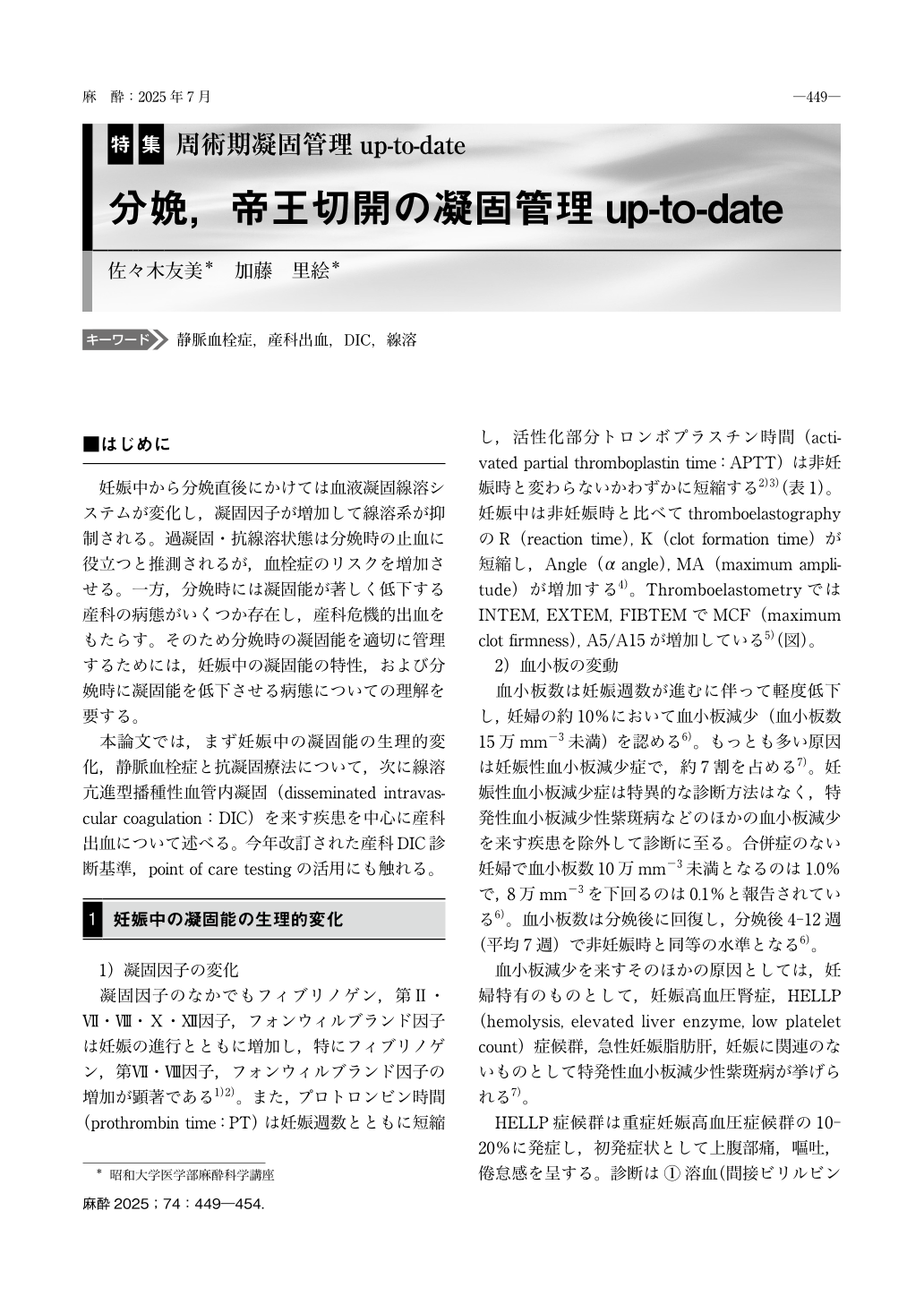Japanese
English
- 有料閲覧
- Abstract 文献概要
- 1ページ目 Look Inside
- 参考文献 Reference
はじめに
妊娠中から分娩直後にかけては血液凝固線溶システムが変化し,凝固因子が増加して線溶系が抑制される。過凝固・抗線溶状態は分娩時の止血に役立つと推測されるが,血栓症のリスクを増加させる。一方,分娩時には凝固能が著しく低下する産科の病態がいくつか存在し,産科危機的出血をもたらす。そのため分娩時の凝固能を適切に管理するためには,妊娠中の凝固能の特性,および分娩時に凝固能を低下させる病態についての理解を要する。
本論文では,まず妊娠中の凝固能の生理的変化,静脈血栓症と抗凝固療法について,次に線溶亢進型播種性血管内凝固(disseminated intravascular coagulation:DIC)を来す疾患を中心に産科出血について述べる。今年改訂された産科DIC診断基準,point of care testingの活用にも触れる。
Pregnancy is associated with changes in the coagulation and fibrinolytic systems. In pregnancy, coagulation factors increase and the fibrinolytic activity is reduced resulting in a state of hypercoagulability. While these changes protect parturients from obstetric hemorrhage at delivery, they increase the risk of venous thrombosis. The risk is particularly high during the postpartum period. In addition to the use of compression stockings and intermittent pneumatic compression, anticoagulation treatment is recommended to prevent pulmonary thromboembolism in the postpartum period.
Obstetric hemorrhage is the leading cause of maternal mortality and morbidity. Obstetric hemorrhage often progresses to coagulopathy, and an assessment of blood coagulation is therefore necessary. Because of the rapid progress of coagulopathy, point-of-care testing is useful. The administration of clotting factor-replacement therapy, fresh frozen plasma, fibrinogen concentrate, or cryoprecipitate is often needed. The new Japanese obstetric disseminated intravascular coagulation(DIC)diagnostic criteria were published in 2024.

Copyright © 2025 KOKUSEIDO CO., LTD. All Rights Reserved.


